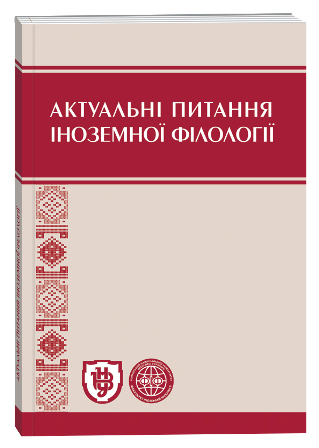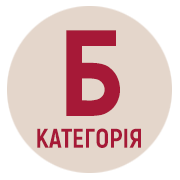THE RELATIONSHIP BETWEEN THE THEORY AND PRACTICE OF SYMBOLISM WITH THE IDEALIST PHILOSOPHY OF I. KANT AND THE IDEA OF HYPERHUMEN OF F. NIETZSCHE
Keywords:
symbolism, symbolists, idealistic philosophy, symbol, stages of symbolism, dematerialization, HyperhumanAbstract
The article covers the main aspects of the influence of the ideas of I. Kant and F. Nietzsche on poetry of the French symbolists. The manifestations of idealistic ideas in the work of poet Symbolists, especially Paul Verlene, Arthur Rambo and Stefan Mallarme, have been analyzed. The notion of "symbol" in the concept of French symbolism is considered, it is established that the symbol acquires a multi-faceted meaning, is placed higher than "image", since it allows multiple interpretations of meanings. Of great importance to the Symbolists was the work of Immanuel Kant's "Critique of Pure Reason", in which he distinguishes two categories of realities: transcendent and transcendental. The symbolistic idea of two worlds, real and ideal, originates from here. The idea of the Hyperhuman grows into the idea of a mystical man who is able to approach divine immortality through the ability to love. Symbolists create a lyrical hero who is not an ordinary passive observer, on the contrary - they proclaim human as the creator of his own reality and destiny, because there is a divine origin in him. It has been established that gradually the idea of the Hyperman changes not only the lyrical hero, but also the image of the reader whom the poet-symbolist wants to see – the reader must feel what poet is trying to convey. It should be noted that even the images are changed in poetry. Paul Verlene is increasingly leaving for dematerialization. Surrounding sounds, noise, voices – all of them are "deaf", "distant". The death gets a special understanding, which ceases to be the end of human life, it is an extraordinary, special moment of transition to another reality, another form of being. He pays more attention not to the outside world, but to the feeling and experience caused by the things of the material world. Arthur Rembo demonstrates a completely different world in his poetry: living, changing, filled with many things, and the lyrical hero becomes a rebel-traveler, who is outraged by any static nature. The central image is a person with his real emotions and feelings. Stefan Mallarme creates poetry, which is considered to be the apogee of symbolism: the poet manages to portray not "thing", but its "effect".This leads to the emergence of new works that do not contain punctuation marks – everything is limited to the ability of the reader to feel. Gradually, symbolism, which was based on idealistic philosophy, itself became a special philosophical trend.
References
Byelyy, A. Simvolizm kak miroponimanye.
Bodler, Sh. Poetycheskiy sbornik stikhotvoreniy «Tsvety Zla».
Ilina, N. V. 2004. “Nytssheanskiy ideal sverkhcheloveka i eho prelomlenie v khudozhestvennom tvorchestve simvolistov”. Nauka y obrazovanie 2:143–145.
Ilina, N. V. 2005 “Obrazy lyubvi i smerti v khudozhestvennoi filosofii simvolizma”. Materialy III Mezhrehionalnoi nauchno-prakticheskoi konferentsii «Molodezh XXI veka – budushchee Rossiiskoi nauki». Rostov-na-Donu 86–87.
Kosykov, N. K. 1993. Sharl Bodler mezhdu “vostorhom zhizni” i “uzhasom zhizni.” Moskva 5–40.
Moreas, Zh. Manifest simvolizma. Avilable at: http://modfrantselit.ru/manifest-simvolizma-statya-zh-moreasatekst-le-symbolisme-tekst-perevoda-v-sokr/
Nalyvaiko, D. 2002. “Bodler, Verlen, Rembo, Mallarme: frantsuzkyi symvolizm yak zmina metamovy yevropeyskoyi poeziyi”. Zarubizhna literatura 5:6–7.
Nalyvaiko, D. 1998. “Frantsuzkyi symvolizm [French Symbolism]”. Slovo i chas 7:23–27.
Nikolenko, O. M. 2005. „Symvolizm: geneza symvolizmu”. Tema 34:130–139.
Nitsshe, F. 1990. Sochyneniia. Moskva.
Oblomievskiy, D. D. 1973. Frantsuzskiy symvolizm. Moskva: Nauka.
Stykhotvorenyya S. Mallarme v perevode V. Alekseeva. Avilable at: http://imwerden.de/tsat/ modules.php?name=books&pa=showbook&pid=1199
Tolmachev, V. M. 1991. “Dekadans: opуt kulturolohicheskoi kharakteristiki”. Vestnyk MHU. Ser. Fylolohiia 5:18–28.
Frantsuzskaia poeziia kontsa 19-nachala 20 veka. Symvolizm. Zarubezhnaia lyteratura XX veka. Moskva: Vуsshaia shkola.







